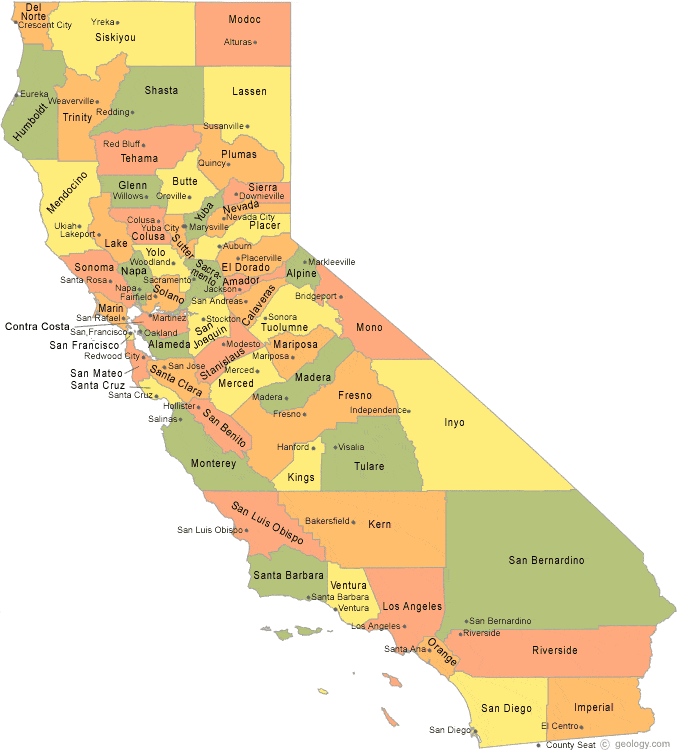California County List: How Many Counties and What Makes Each Unique
California County List: How Many Counties and What Makes Each Unique
Blog Article

Have you ever wondered what the exact county count in California is? You’d be surprised how many people ask the same question. Whether it’s for school projects, travel plans, or simple trivia, the number 58 keeps popping up, yetthat short answeris just the first layer of a deeper tale.
California’s counties form an incredibly diverse mosaic: sun-drenched coastal hubs, snow-capped alpine districts, vast agricultural heartlands, and historic mission settlements. Every county has a chapter in the state’s how many counties in ca saga, moulded byrailroad expansion, high-tech revolutions, and ever-changing demographics.
In the sections ahead, we’ll explore why California ended up with 58 counties, the real responsibilities counties shoulder, and the outliers that set fascinating records. When we’re done, you’ll have the numbers—and map your next California adventure with confidence.
Origins of California’s 58 Counties
On statehood day in 1850, the map looked nothing like today’s. Rapid gold-rush immigration compelled legislators to carve out new counties. Within twenty years, the count had ballooned to more than fifty counties, and by 1907 the remaining gaps were closed, locking in the now-famous tally of 58.
Capitol archives indicate that many break-away regions were born because of a trio of factors:
- Geographic isolation turned routine business into week-long trips.
- Economic clashes pitting ranchers against merchants ignited partition drives.
- Ethnic enclaves sought their own seats.
By 1920, the political map stabilised. Right now, even bold secession schemes rarely get ballot traction, prompting analysts to call the era when new counties sprouted truly closed.
A County-by-County Tour of Terrains
Stretch a string from rugged Del Norte on the Oregon line to border-side Calexico, and you’ll traverse a climatic kaleidoscope. Ocean-brushed jurisdictions soak up marine layers and mild winters, while interior giants like San Bernardino or Kern record triple-digit heat.
- Sierra jurisdictions such as Mono, Mariposa, and Calaveras host ski resorts.
- River-delta territories fight subsidence but export produce worldwide.
- Channel-coast administrators like Ventura license film crews on beaches.
Such variety explains how water rights, zoning, and ag yields diverge so sharply. Topography dictates everything from wage levels to weekend hobbies.
What Counties Actually Do
Amid Sacramento’s delegated framework, municipalities handle zoning, but counties shoulder vital “unseen” duties that keep daily life humming. From birth to death—vital records, coroner reports, property deeds—all are archived at the recorder-assessor’s office.
Elected sheriffs patrol unincorporated land, while county benches hear probate battles. Public-health branches coordinate Medi-Cal. Budget battles spark long agenda nights.
Example: Contra Costa’s Shared Services Model
Los Angeles County alone employs 100 000+ workers, highlighting how flexible county governance proves. There’s no single blueprint when land areas shift from 47 to 20 000 sq mi.
In the end, county halls act as middle managers between Capitol and curbside. Understanding their remit helps residents demand accountability.
Demographic and Fiscal Highlights
California houses over thirty-nine million people, but that population clusters unevenly. LA’s single jurisdiction hosts more than one resident in four. Conversely, remote Alpine hovers around a thousand residents.
- Most populous: Los Angeles
- Fewest people: County of Alpine
- Largest area: San Bernardino
- Tightest borders: San Francisco
Money, like people, concentrates and evaporates. Tech-centric jurisdictions boast per-capita GDP rivaling small nations, while Central Valley breadbaskets face commodity price swings. This revenue gap drive school funding debates every decade.
Memorising these records pays dividends: county borders redraw home-buying budgets and business licences.
Touching All Counties in One Journey
For intrepid travellers, setting foot in each CA county has become a badge. A popular itinerary sets out in the south-west corner, rolls up the Pacific Coast Highway, curves inland at Big Sur, then threads through rice-field flats and orchard grids, before snaking into the granite spine for historic gold-rush hamlets.
Regional Mini-Loops
- South-land Loop – Border to wine country; ten jurisdictions in a long weekend of days.
- Crop-Belt Drive – Bakersfield up to the delta; flat-land express.
- Northern Peaks – crater-rim roads; jaw-dropping vistas.
Close the circuit in El Centro, after two thousand kilometres of asphalt. After that, you can answer any road-trip quiz about county tallies—because you’ve seen them all!
Frequently Asked Questions
Curious about California’s 58 counties? The following FAQ has you covered.
How many counties does California have?
Government documents list fifty-eight counties—no more, no fewer. Whether you ask the Secretary of State, the Census Bureau, or a local historian: 58.
Which county has the largest population in California?
Los Angeles County tops the list, housing roughly one in four Californians. From Hollywood to high tech, a mix of industries continues to fuel steady inflow.
Which CA county has the fewest residents?
Tiny Alpine County sits at the bottom of the population chart, rarely crossing the 1 200-resident mark. High-elevation geography limits large-scale development, creating tight-knit communities.
Largest county by land size?
Geographic titan San Bernardino County stretching more than 20 000 square miles. You can drive for hours without leaving its borders—crossing ski slopes, dunes, and bedroom communities.
How did California end up with 58 counties?
Gold-rush politics, rail expansion, and farmland disputes carved today’s boundaries, ending when Imperial County formed in 1907. While secession talk appears now and then, no plan has passed statewide hurdles.
Can new counties still be created in California?
Technically, the California Constitution leaves the door open, though the process is arduous. Financial viability studies plus state-level sign-off deter most would-be county creators. That’s why no county lines have moved since the early 1900s.
Why are counties important to everyday life?
Counties handle the backbone of local governance: property assessments, public hospitals, welfare programs, and jails. Their wide remit bridges state mandates with community needs, making the 58 jurisdictions essential to all Californians.
Report this page